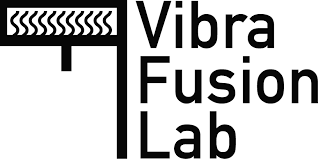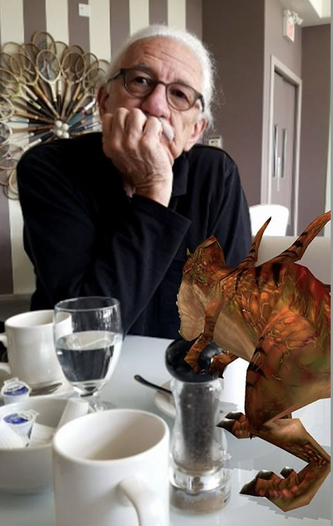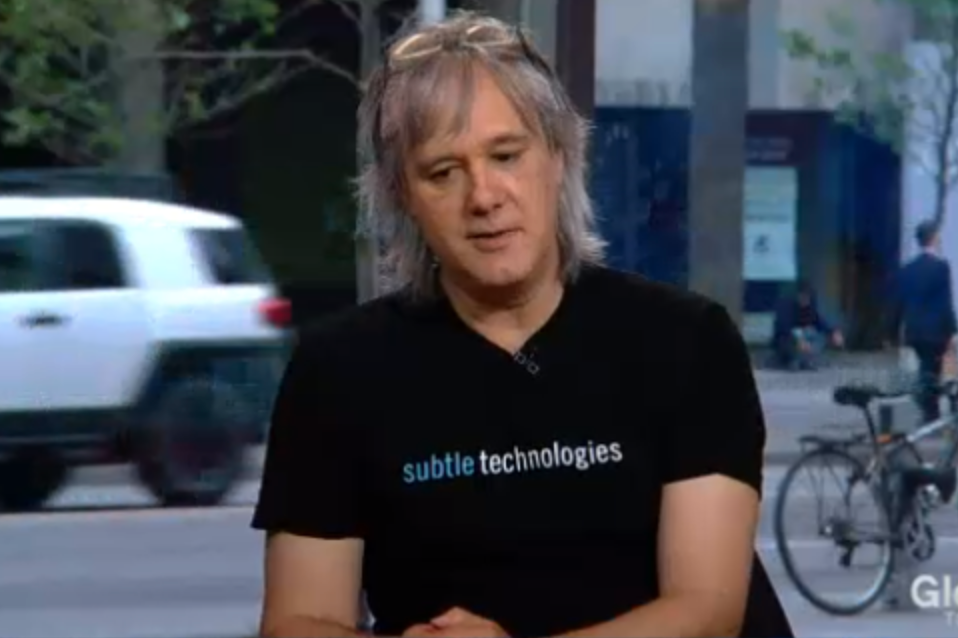|
David Bobier David Bobier is a self-identified hard of hearing media artist with a mental health diagnosis and is the parent of 2 deaf children, now adults. His work has been exhibited internationally and has been the focus of prominent touring exhibitions in Ontario and the Atlantic provinces. Bobier has received grants from Canada Council for the Arts, Social Sciences and Humanities Research Council, Grand NCE, Ontario Arts Council and New Brunswick Arts Council. He has partnered with Inclusive Media and Design Centre at Ryerson University, Toronto and Tactile Audio Displays Inc. in researching and employing vibrotactile technology as a creative medium. As an extension of this research Bobier has established and is Director of VibraFusionLab in London, Ontario, Canada. The Lab emphasizes a holistic approach to considering vibration as a language of creation and exploration and to investigating broader and more inclusive applications of the sensory interpretation and emotionality of sound and vibration in art making practices. Through VibraFusionLab and in his own art practice Bobier aims at creating opportunities of greater accessibility in art making, art appreciation and in viewer experiences of art practices and presentations. Using performance and interactive installation Bobier explores the bridging of methods of communication and language and ways of interpreting or transforming one modality to another. His work is engaged in a multi-sensory approach and experimentation that allows for the transitioning and re-interpreting of content and experience from one medium to another with particular emphasis on the tactile as a form of creative expression. Jim Ruxton Jim Ruxton received a Masters degree in Electrical Engineering from the University of Ottawa. After working for a few years as a high frequency design engineer he began to pursue his interest in the arts by attending and graduating from the Ontario College of Art and Design . Since then he has been working as an artist and engineer in installation, performance, theatre, dance and film and collaborated with many other artists throughout his career. His company, Cinematronics, has helped numerous artists realize their technically ambitious projects and provided special effects for numerous films, tv series ,commercials and science museums.. Jim uses electronics in multiple creative ways, whether it be in creating interactive systems , developing evocative lighting installations or robotic systems. He is the recipient of two Dora Mavor Moore Awards , was awarded a Chalmers Fellowship, a Hamilton Arts Award and has been the recipient of numerous arts grants. Jim is also a founder and former Director of Programs for Subtle Technologies, a 20 year old organization that creates links between artists and scientists with events throughout the year and during its annual festival in Toronto. He was an instructor of hybrid media at Ontario College of Art and Design for many years and founded the Toronto Art Science Salon with physicist Stephen Morris . Jim is also the inventor of ColorWave , a lighting technology that has revolutionized the decorative lighting industry . He has been granted numerous patents for this work. He is a former board member of Centre[3], a Hamilton based arts organization and gallery as well as Year01, a Toronto based media arts organization. He is also a member of the London based Vibrafusion Lab Collective. Jim is passionate about bringing people together from different disciplines to facilitate work that extends beyond traditional genres. VibraFusionLab: AN INNOVATIVE CENTRE FOR ARTS-BASED VIBROTACTILE RESEARCH AND CREATIVE PRACTICE. VibraFusionLab is a media arts centre based in London, Ontario that provides opportunities for the creation and presentation of multi-sensory artistic practice, partnering with other arts and technology-related organizations in order to achieve this. As an interactive creative media studio VibraFusionLab promotes and encourages the creation of new accessible art forms, including the vibrotactile, and focuses on inclusive technologies that have the potential of expanding art-making practices in the deaf, blind, disabled and hearing communities, and for creating more inclusive experiences for deaf, blind, disabled and hearing audiences. Providing the opportunity to create compositions and expand artistic practices that are designed to be experienced as tactile stimuli (rather than acoustic sound), this art form is accessible to a greater diversity of artists and audiences alike. VibraFusionLab represents considerable potential in generating artistic development and innovative research in vibration and the tactile as an artistic modality. It furthers the desire of combining alternative language, communication and emotional strategies and experiences into artistic practice. In addition, the use of this type of interactive multimedia, multisensory approach provides those with different abilities to enjoy equal participation. It provides the potential for making various forms of artistic expression more accessible. It offers new and unique approaches for those with diverse abilities to produce art using an innovative tactile mode and opens alternative opportunities through artistic expression. Over the last decade, consumers have witnessed a dramatic increase in the use of low-fidelity, discrete vibrotactile feedback to enhance or replace audio stimuli in entertainment systems. However, use of high-resolution, continuous vibrotactile displays remains quite uncommon. The Emoti-Chair is a high-resolution, continuous vibrotactile display system that may be driven by any type of audio signal and is purported to convey the emotional properties of sound through organized vibrotactile stimulation. The Emoti-Chair project was developed by the Inclusive Media and Design Centre, IMDC, (formerly Centre for Learning Technologies) at Ryerson University in Toronto, Ontario and expanded by Tactile Audio Displays Inc., (TAD) Toronto. The research concept was to develop a theatre chair for the purposes of presenting a tactile vibrational representation of the movie audio files. The technology separates audio signals into discrete vibrotactile output channels (voice coils) that can be presented on the body to create a high-resolution audiotactile experience through direct connection with musical instruments, live sound and digital sound files. A partnership between IMDC, TAD and VibraFusionLab resulted in this one-of-a-kind innovative studio space. Other collaborative projects include Tangled Arts + Disability (Toronto); Tangled London (London, ON); Project Re•Vision, REDLAB (University of Guelph); Deep Listening Institute (Rensselaer Polytechnic Institute in Troy, NY); Department of Disability Studies at Kings College (University of Western University, London, ON); InterAccess and the Music Gallery (Toronto); Inter Arts matrix (Waterloo, ON); Centre3 (Hamilton); Mobile Media Lab, (Montreal); Together 2012, (London, UK); Art Gallery of Guelph; Adi Hollander (Amsterdam) VibraFusionLab has hosted and worked with artists and musicians from Canada, United States, Holland and United Kingdom including Deirdre Logue, Graham Smith, Gordon Monahan, Marla Hlady, Ellen Moffat, Isabella Stefanescu, Cailen Dye, Rick Sacks, Dennis Siren, Jason Doell, Emilie Lebel, Gayle Young, Allison Cameron, Brent Lee, Jesse Stewart, Moe Clark, as well as, Deaf and/or disabled artists Lindsay Fisher, Lynx Sainte-Marie, Chisato Minamimura, Alison O’Daniel, Catherine McKinnon, Tiphaine Girault, Rachel Gadsden, Chantal Dequire, Tracey Salaway, Alexander Genievsky. Get in touch with us if you have any questions and/or if you want to get involved. |


